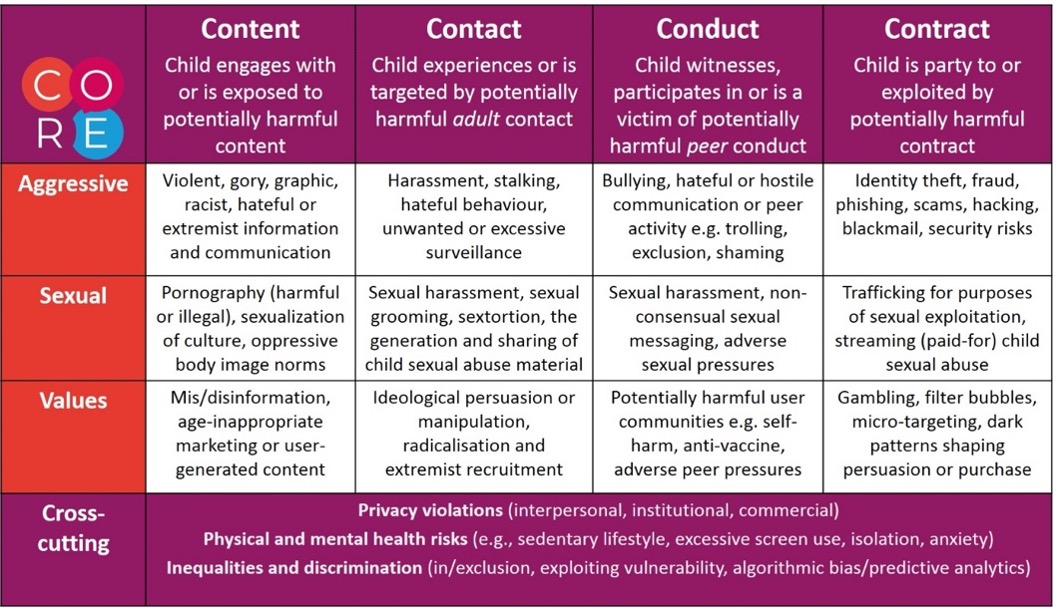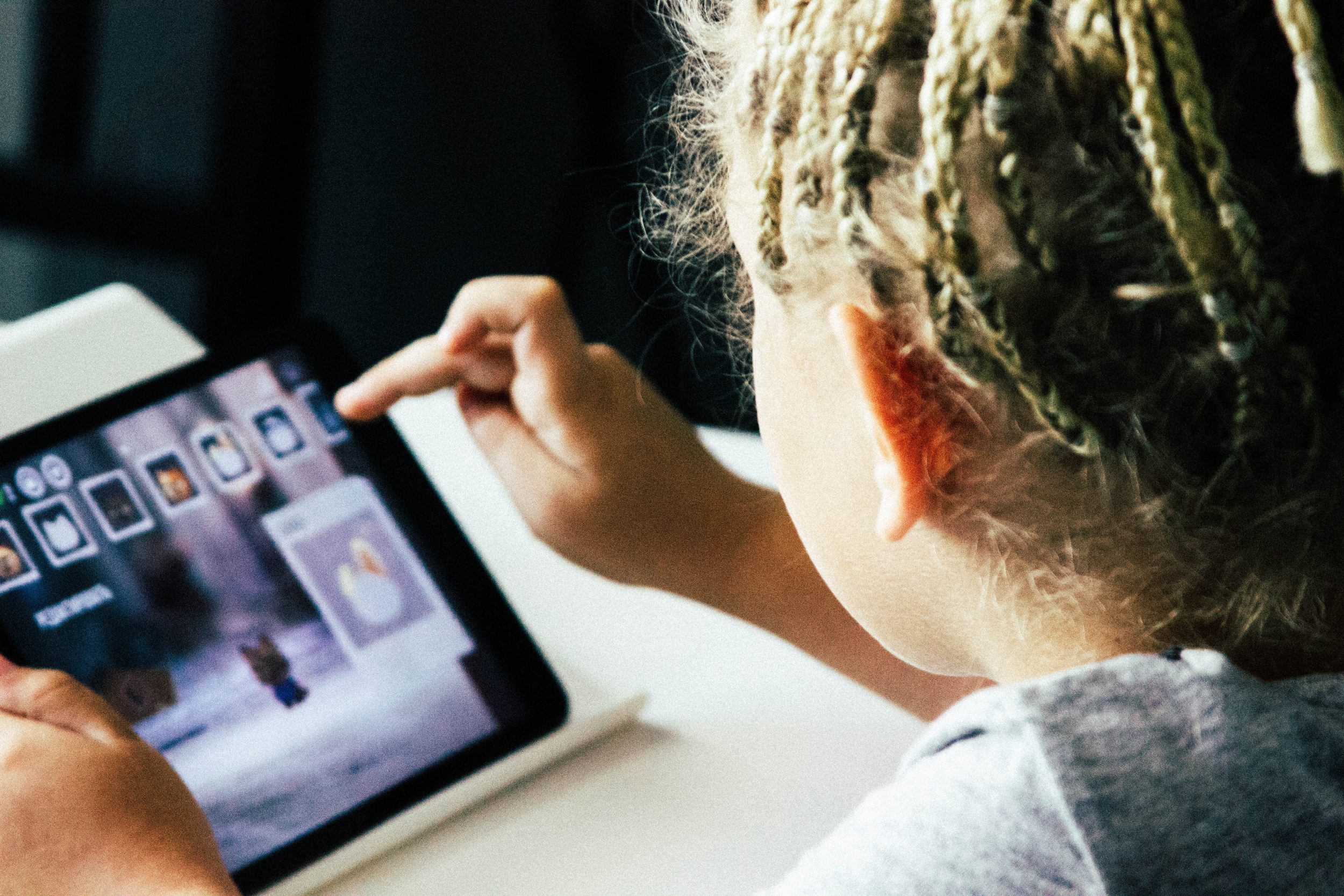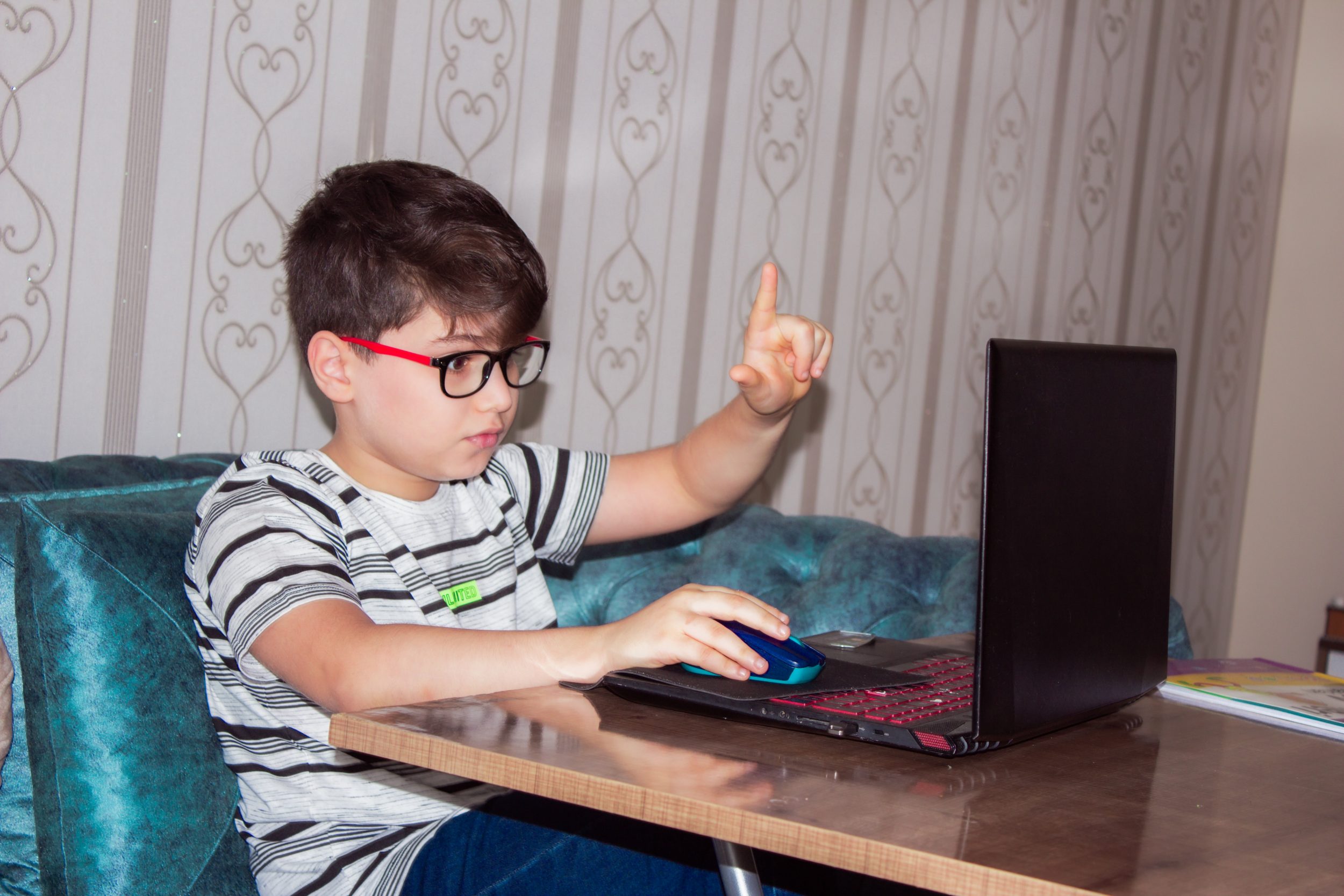
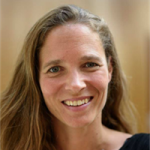
 The International Telecommunications Union World Telecommunication Development Conference draws to a close this week. Convened in Kigali, Rwanda, the event called upon key stakeholders to harness digital technology to drive global development. The conference saw the launch of the Global Connectivity Report 2022. Professor Sonia Livingstone, Professor Ellen Helsper and Dr. Miriam Rahali contributed to Chapter 9, which looks at the evolution of connectivity amongst children and young people, and offers in-depth analysis of issues that need to be resolved to achieve full digital inclusion.
The International Telecommunications Union World Telecommunication Development Conference draws to a close this week. Convened in Kigali, Rwanda, the event called upon key stakeholders to harness digital technology to drive global development. The conference saw the launch of the Global Connectivity Report 2022. Professor Sonia Livingstone, Professor Ellen Helsper and Dr. Miriam Rahali contributed to Chapter 9, which looks at the evolution of connectivity amongst children and young people, and offers in-depth analysis of issues that need to be resolved to achieve full digital inclusion.
The digital environment is transformed by the rise of new technologies, such as artificial intelligence, virtual reality and smart environments. Today’s children and youth are the most connected generation – 71% of youth (15 to 24 years of age) use the internet, far more than any other age group – and hopes are high that they will reap the benefits.
But to ensure positive long-term change, society must address the digital divide at multiple levels. Only 40% of school-age children have access to the internet at home, with stark disparities across and within regions.
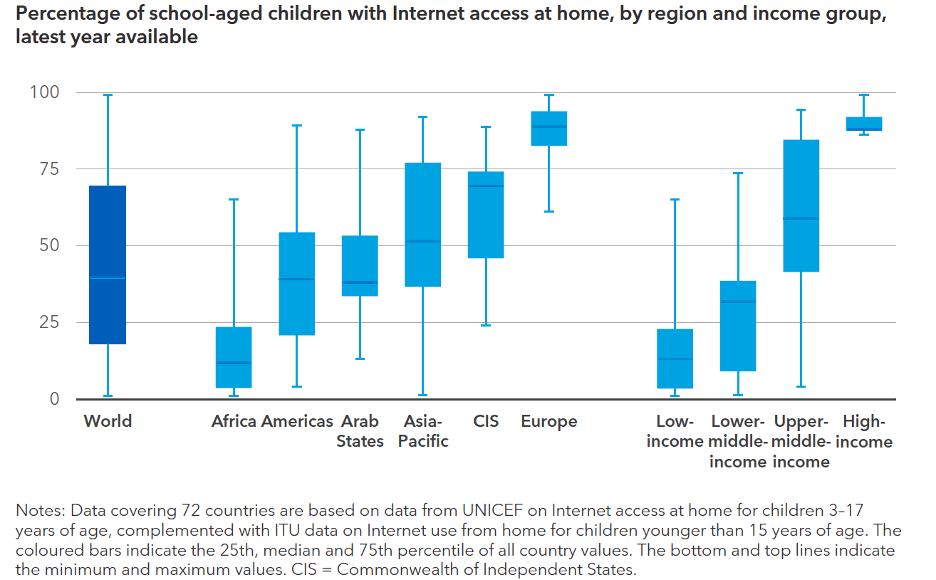 Crucially, the more societies become connected, the more a lack of connection presents a problem for those who are excluded.
Crucially, the more societies become connected, the more a lack of connection presents a problem for those who are excluded.
Further, it is now clear that access along does not ensure that children and youth benefit from the digital age. Even if the gap in access were closed, how the access is used may further reproduce existing socio-economic inequalities. The second level of the digital divide emphasizes the importance of digital skills in mediating the opportunities and risks of digital engagement. As shown below, there are huge differences in youth skills (basic, intermediate, advanced) by country income group.
Risks and Harms
As the digital environment becomes more complex, children and young people need to critically understand the digital world in which they are increasingly immersed. Opportunities and risks tend to be correlated: more access and higher digital skill levels are associated with more exposure to online risks, making it challenging to increase the former without increasing the latter.
Because the digital landscape can change quickly, it presents new risks when children and youth have access before they are media literate or have acquired online resilience, and/or in the absence of legal, regulatory and policy frameworks and protection mechanisms.
The 4 C’s of Online Risk to Children (Source: CO:RE)
The risks for children and vulnerable youth navigating a digital environment are now the focus of growing concern among parents and caregivers, educators, clinicians, civil society, policy-makers and industry. Access and digital skills are key to ensure that children and young people enhance their prospects. However, stakeholders must collaborate effectively to protect them from online risks and harm.
Good measures are vital for children’s and youth rights in a digital world
Many initiatives and policies seek to close the digital divide and improve outcomes, including preventing or mitigating the risk of harm for children and youth in the digital age.
While household access to the internet is most often measured, individual opportunities for children and youth are less well documented, especially when disaggregated by gender, disability, income or other factors indicating vulnerability or disadvantage. Even less is known of the quality of digital experiences and outcomes – and this lack of knowledge extends to the benefits that may be realized from online opportunities as well as to the risks of exclusion or harm.
Efforts to foster digital inclusion would be improved with better standardized metrics for measuring and monitoring access, digital skills and outcomes within and across in all countries. For children, Global Kids Online developed key indicators for access, activities, risks and safety which is now adopted by the ITU. The ySKILLS project has developed an index for measuring youth digital skills.
Improving evidence on access, use, skills and outcomes of children and young people will require international cooperation to ensure comparable definitions and measures and establish benchmarks enabling the measurement of progress, the examination of problems and the identification of good practice. Robust disaggregated data and evidence is vital for the realization of children’s rights in relation to the digital environment.
Note: This blog post draws on Chapter 9 of the Global Connectivity Report 2022. This article reflects the views of the authors and not those of the Media@LSE blog nor of the London School of Economics and Political Science.
Featured image: Photo by Jeswin Thomas on Unsplash



